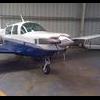201 OIL CONSUMPTION
-
Members Online
- MikeOH
- FlyingDude
- Z W
- Grant_Waite
- CL605
- swdirtrider
- Guy123
- PT20J
- Guilly
- T. Peterson
- jetdriven
- Stealth Mooney
- Rmfriday
- redbaron1982
- Justin Schmidt
- Boilermonkey
- AndreiC
- KSMooniac
- BeachLifeMoon
- KLRDMD
- Aleksei
- snowman
- CCAS
- TCC
- joemoriss
- Schllc
- birdofjoy
- Marc_B
- gevertex
- 201Steve
- AspiringOwner
- atpdave
- William Munney
- Ragsf15e
- philiplane
- Utah20Gflyer
- Mmrkulic
- PeteMc


Recommended Posts
Join the conversation
You can post now and register later. If you have an account, sign in now to post with your account.